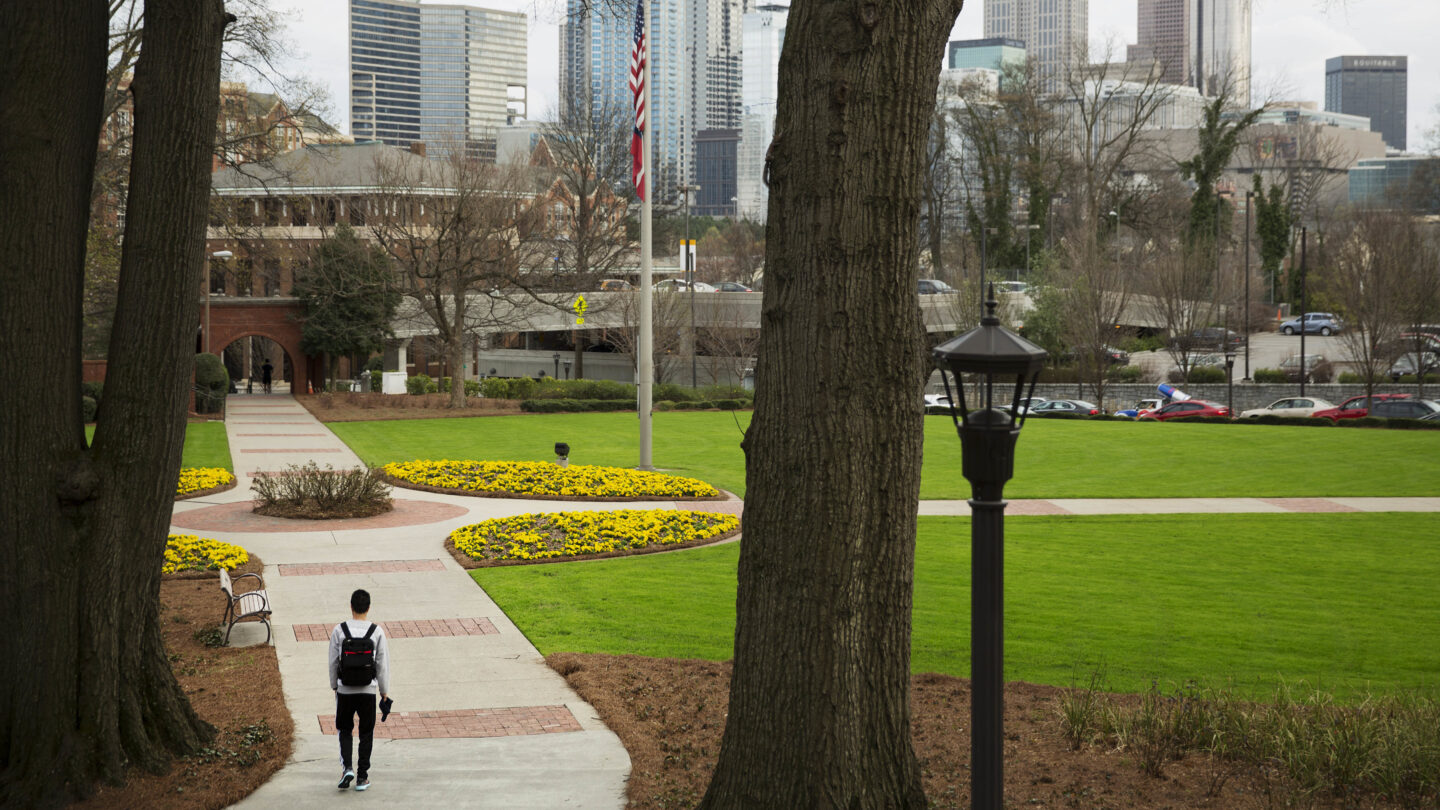The Supreme Court may have struck down President Biden’s plan for sweeping student loan forgiveness, but another plan that could gradually achieve similar results is in the works. In fact, millions of borrowers can begin to benefit from it as early as this fall, when they’re expected to begin making monthly loan payments after a three-year pause.
Now, this forgiveness isn’t simple. It won’t happen suddenly, in one lump sum. It will instead come slowly through a complex new repayment plan — called the SAVE plan, for Saving on a Valuable Education — that will save borrowers thousands of dollars by keeping their monthly payments small (as small as $0) while also preventing interest from exploding what they owe.
“[It] has the potential to massively change student loan repayment in our country as we know it,” says Dominique Baker, an associate professor of education policy at Southern Methodist University.
SAVE is a new form of income-driven repayment plan that the Department of Education says will phase out the current Revised Pay As You Earn plan (REPAYE).
If this doesn’t sound like loan forgiveness, get this:
The department says that under the old plan, borrowers repaid $10,956 for every $10,000 they borrowed. Under the new plan, they would pay back just $6,121.
“This is a big new loan forgiveness policy, particularly for undergraduates,” says Jason Delisle, who studies higher education at the Urban Institute.
In a January review of the SAVE plan, Delisle and his colleagues found that for bachelor’s degree recipients, “the share fully paying off their loans would fall from 59 percent under current [income-driven repayment] to 22 percent.”
Based on current estimates, SAVE could end up costing the government anywhere from $138 billion (the department’s estimate) to $230 billion (the nonpartisan Congressional Budget Office’s estimate) to $361 billion (a Penn Wharton Budget Model analysis) over the next 10 years. As a comparison, the forgiveness program just scuttled by the Supreme Court was expected to have a one-time cost of roughly $400 billion.
Here’s a handy guide to what it all means for borrowers.
What is the SAVE plan, and how does it work?
Like current income-driven plans, SAVE bases monthly payments on a borrower’s income and family size. But in several ways, the terms of SAVE will be far more generous.
First, roughly a million more borrowers will qualify for $0 monthly payments. How?
Repayment plans include an income “floor,” says Baker, below which “the government says, ‘Oh, you don’t have to make any payments. We think that’s the money that you need to live — for food, for gas, for things of that nature.'” This income is essentially exempt.
The SAVE plan raises this floor, protecting more of a borrower’s income from that monthly payment math — bumping to 225% of the federal poverty guideline, from the current 150%.
According to an Education Department fact sheet, “This change means a single borrower who earns less than $32,805 a year ($67,500 for a family of four) will not have to make payments.”
Second, as long as borrowers make their monthly payments, the new SAVE plan also stops interest from accumulating. Under previous plans, borrowers with low or $0 payments — too low to cover their monthly interest charge — saw that interest accrue. Now, that won’t happen.
Third, borrowers with undergraduate loans will see their monthly payments cut in half because of a big shift in what’s called the assessment rate. Simply put, the Education Department will base payments on 5% of borrowers’ remaining income, not the current 10%.
And fourth, SAVE includes a more generous forgiveness mechanism. In the past, undergrad borrowers could have their debts forgiven after 20 years of payments. Under SAVE, those who borrow $12,000 or less can have their debts wiped away after just 10 years of payments.
What’s more, a borrower with $13,000 in debts wouldn’t have to wait 20 years for forgiveness — just 11. Every $1,000 over the $12,000 mark simply adds an extra year of required payments.
Borrowers with much larger undergraduate debts can still qualify for forgiveness after 20 years of payments, while borrowers with graduate school debts can qualify for the plan’s more generous monthly terms but would have to wait 25 years for forgiveness.
The first two of these provisions ($0 payments and no interest) will go into effect soon. The latter two become effective in July 2024.
Who qualifies for SAVE?
SAVE is for student borrowers with federally held loans, including all direct subsidized, unsubsidized and consolidated loans, as well as PLUS graduate loans.
Those with Federal Family Education Loans (FFEL) or Perkins Loans that are held by a commercial lender would need to consolidate into a direct loan in order to qualify.
Parents who took out a federal loan to help their children pay for college (known as Parent PLUS loans) are not eligible for SAVE.
Future borrowers, however, will be eligible for these benefits. Unlike the forgiveness plan that the court struck down, SAVE isn’t a one-time move but a permanent program.
But just as it was with the now-defunct forgiveness plan, borrowers won’t receive SAVE benefits unless they apply. (Keep reading for some handy tips on that below.)
How and when can I apply?
After three years of pause extensions, student loan payments are set to resume in October, with interest starting to accrue again in September.
Even without SAVE, the return to repayment is a huge undertaking for the Department of Education and student loan servicers — and it could get messy. Back in January, NPR reported serious concerns about funding shortfalls inside Federal Student Aid (FSA), the Education Department office tasked with managing the government’s student loan portfolio.
The Biden administration hasn’t yet released the formal application for SAVE, saying the Department of Education will notify borrowers when it becomes available later this summer.
But borrowers can apply now for REPAYE, the plan that SAVE will replace. Those on REPAYE will then automatically be shifted onto SAVE when the changes take effect this fall.
You can check whether you’re on the REPAYE plan by logging in to StudentAid.gov and clicking on the “My Aid” link under the “My Info” sidebar.
The department suggests that you do so now, before payments resume, noting that it may take “a few weeks” to process your request, given that it will need to verify income and family size.
Also, given those funding problems at FSA, borrowers who wait until September or October to call their loan servicer could be in for a lot of hold music.
The department says it’s redesigning the applications for all income-driven repayment plans so that they eventually take “10 minutes or less” to complete.
As part of that redesign, borrowers will have the option to opt into an IRS integration that allows the Education Department to access their tax returns. This step allows the department to automatically recertify borrowers’ enrollment every year so they don’t have to keep applying and updating.
Could SAVE be ended by another legal challenge?
Anything’s possible.
“The White House itself is suggesting that SAVE participants … will be repaying about $0.71 of every dollar they borrow. That doesn’t sound like a loan. It sounds like a quasi-grant program,” says Nat Malkus, who studies higher education at the American Enterprise Institute.
Malkus believes that the SAVE plan will almost certainly face legal challenges and that the courts will again have to answer the question, “Does [the SAVE plan] actually transform the student loan system into something that Congress would never have authorized?”
But the certainty of a legal challenge does not make the plan’s downfall a certainty. In fact, multiple experts tell NPR that SAVE is not nearly as legally vulnerable as the debt forgiveness plan that was just struck down.
The Supreme Court’s decision hinged on a question about the HEROES Act, a 9/11-era policy that allows the secretary of education to “alleviate the hardship” of federal student loan debt during a national crisis. The court ultimately found that trying to use that law to justify the erasure of debt was an overstep on the part of the secretary.
The SAVE plan, on the other hand, relies on the Higher Education Act. This law has allowed the department to create and change income-driven repayment plans for years, without legal interference.
“Congress clearly gave the authority to the secretary of education to design income-driven repayment plans,” says Delisle at the Urban Institute. “So it’s in law.”
Copyright 2023 NPR. To see more, visit https://www.npr.org.
9(MDAxODM0MDY4MDEyMTY4NDA3MzI3YjkzMw004))

9(MDAxODM0MDY4MDEyMTY4NDA3MzI3YjkzMw004))









